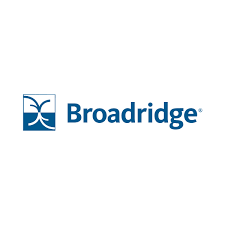 Are you staying on top of this year’s top customer communication trends? If you answered “yes,” congratulations! There’s no need for you to continue reading. If you answered, “no” or “I don’t know,” I encourage you to take the time to read this article.
Are you staying on top of this year’s top customer communication trends? If you answered “yes,” congratulations! There’s no need for you to continue reading. If you answered, “no” or “I don’t know,” I encourage you to take the time to read this article.
Trend 1: Emerging Technologies Raise the Bar
Technology is changing the customer communication space in 2018 and beyond. From artificial intelligence and chatbots to consolidator sites and communication ecosystems, these technologies are raising the customer experience bar.
Trend 2: Arrival of a Unified Customer Journey
We have experienced the arrival of the unified customer journey; however, many companies are still challenged with mapping all of their customer touch points. In fact, Chief Marketing Officers and Chief Digital Officers often look at me like I’m crazy when I say, “I bet I can think of 12 communications that you send out that are not part of your customer journey.” They are convinced they have a complete journey map with corresponding touch points. That’s when I question if they included their monthly bill or statement – the communication that gets read by 97 percent of consumers for an average of four minutes each month – and they admit they didn’t think of it.
Transactional communications may be overlooked because bills are often considered an operational activity (i.e., they facilitate payments) and statements are often considered a regulatory requirement. When aligning your communications across the customer journey, remember to include your transactional communications. They are arguably one of your most powerful customer touch points.
Also Read: 4 Classic Real Estate Marketing Tactics Reimagined for Social Media
Trend 3: Success Through Iteration and Measurement
When creating a customer communication strategy and program, start by asking, “What are we trying to solve for?” For example, some companies want to improve the customer experience, increase paperless adoption, reduce the number of calls to the call center, and reduce days sales outstanding for payments.
You can then dive into each of these areas. For example, one of our consumer finance clients wanted to reduce calls to the call center. In many industries, if you can avoid a call to the call center, the reduction in cost is actually greater than turning off paper. With a bit of research, we uncovered that many calls were to dispute charges. We suggested to our client that they include a link on their digital communications and website that was specifically for disputing charges – and the amount of calls dropped.
By using data to uncover insights and with consistent measurement and iteration, the value of your communications program starts to improve. It’s not just about the 50-75 cents you saved on print and mail, but it now becomes about the 70 hours’ worth of value you increased over the year by enabling customer self-service and reducing complexity. Success comes from tracking the right things along the way.
Also Read: Why Influencers, Not Footballers Will Score for Brands During the 2018 FIFA World Cup
Trend 4: Print Is an Important Part of the Mix
While paperless adoption is often an obvious way for companies to reduce costs, research indicates that 40 percent of consumers still want to receive print communications. It’s really important to optimize print communications, especially if that’s where the consumer wants to interact with you but be careful about pushing customers to go paperless because you might inadvertently close down a key touch point.
We recently organized a future of communications design challenge, where one of our objectives was to create a way for paper and digital to work together. For example, reducing a multi-page printed bill to a single page with just the key pieces of information, like amount owed and the payment due date, and providing other information online. That’s one way that digital and print can work together – and it creates a simpler communication for customers.
Also Read: Artificial Intelligence is Set to Explode. Is Your Data up to the Task?
Trend 5: Continued Migration to Outsourcing
It can be tricky to deliver relevant and personalized communications across channels that appeal to the breadth of your customers’ preferences. Personalization is critical across all channels because consumers expect for you to speak to them like you know them; after all, they know you have a lot of data about them.
Many organizations simply don’t have the resources or expertise to manage data, preferences and channels. They are motivated to outsource their communications because they gain access to the latest technology, reduce costs, and diversify their channel strategy.
Also Read: 10 Simple Tips for Webinar Success












Comments are closed.